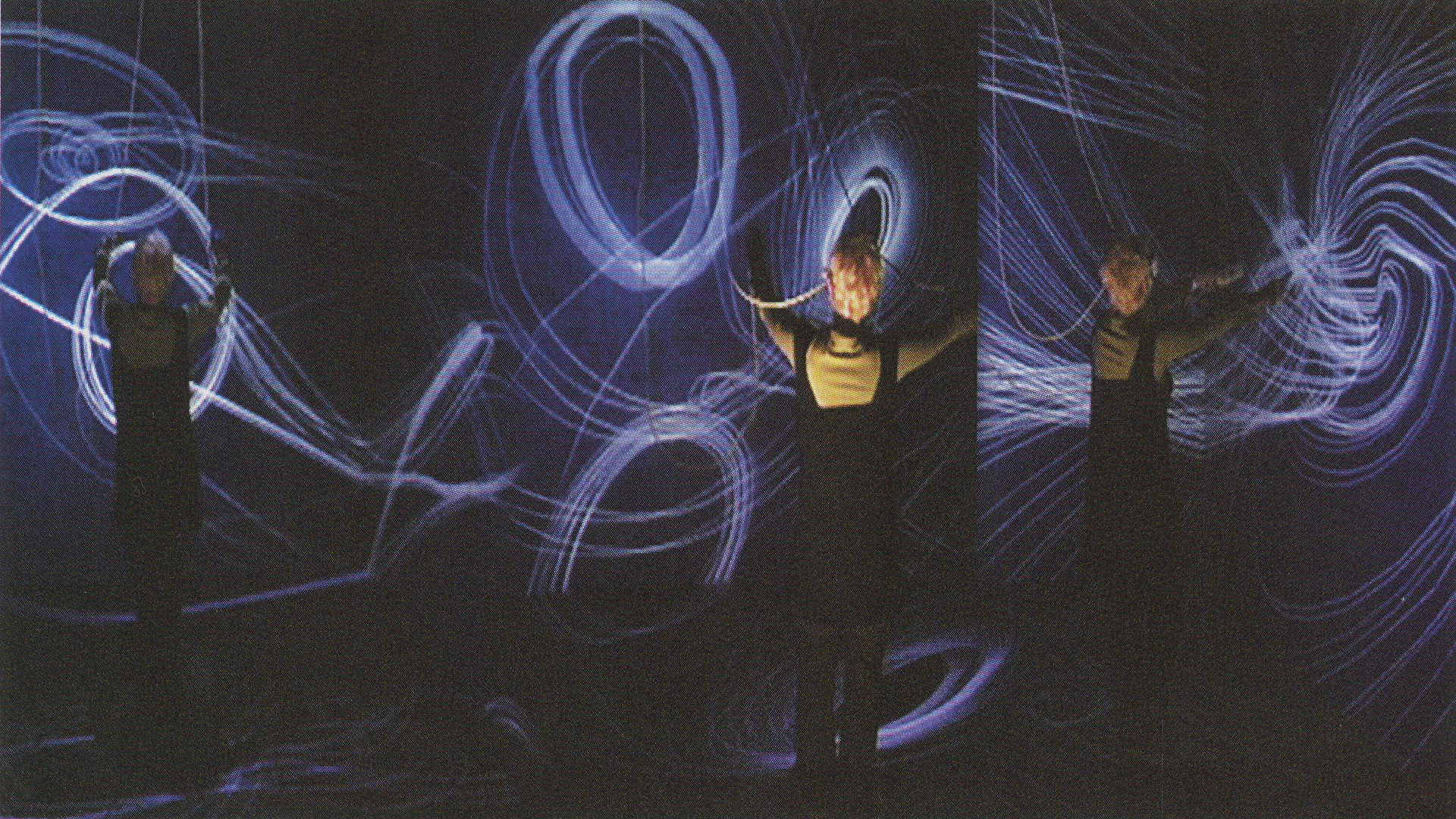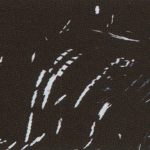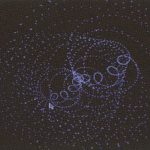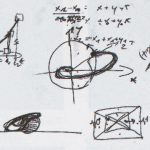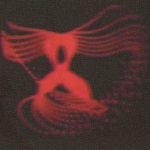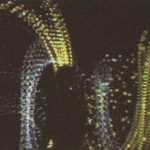Petra Gemeinboeck, Roland Blach, Nicolai Kirisits: Uzume
Artist(s):
Title:
- Uzume
Exhibition:
Creation Year:
- 2002
Medium:
- virtual environment
Category:
Keywords:
Artist Statement:
Uzume (“whirling”) is named after a Japanese Shinto goddess who lured the sun goddess Amaterasu out of the cave where she was hiding. The interplay between Uzume‘s immediate response and willful behavior shapes the relationship between the visitor’s self and the virtual “other.” Yet the dialogue with the strange, whirling opposite also shows its ambiguous nature. Uzume thus explores issues of identification, reflection, and control in relation to immersive computer-controlled systems.
In Uzume, a sensitively responsive, dynamic environment surrounds and immerses visitors, unfolding the communicative nature of an abstract virtual entity. Because visitors are not able to control their surroundings, they need to develop a playful dialogue in order to get acquainted with the opposite. The interface becomes more or less opaque. Engaging and exploring, visitors repeatedly cross the otherwise transparent borderline between their play and the underlying control system.
Uzume bridges past and present as the abstract structure grows in relation to time and space, and is drawn purely by sequences of spatial transitions. Its unpredictable gestures evolve based on spatial representations of the temporal behavior of nonlinear chaotic systems, so called “strange attractors.” Moving within the physical projection space and gesturing with their arms, visitors are able to traverse and explore the various states of the system. All of these configurations develop irreversibly and shape an individually actualized, unique moment. Both, the visitor and the whirling opposite are embedded in a viscous fluid-like force field that becomes subtly transformed by the physical presence of the visitor. Uzume‘s sonic response, shaped by spatially moving sounds, develops individually modulated, tenuous passages along the traces of the visitor’s movements.
Uzume‘s world is bound to its physical projection space; there is no navigation. As visitors move physically around the projection, they affect Uzume‘s current state. There’s an almost tangible quality to this projected virtual world, in that the underlying, invisible fluid-like “medium” sensitively responds to every movement and viscously transforms the visible surroundings.
The technological possibilities and limitations of the immersive, real-time stereo projection system of the CAVE, as well as its effect on human perception become an integral component of Uzume‘s realization. The most interesting quality of this system is the integration of its inhabitant in the evolving progress. The “observing” (tracking and processing) capability of the computer-controlled system permits the viewer to be “present” and involved. Due to the system’s attentive and responsive qualities, the dialogue between the visitor and the environment inherently evolves in a state of mutual influence.
Process Information:
The whirling appearance of Uzume is based on the idea of a space that grows and changes dynamically over time, and is “drawn” purely by movement.
Participants are challenged to “communicate” with their movements and thus motivate their opposite to respond. It is fascinating to observe what a “lively” character the unpredictable behavior (of the chaotic system) can assume.
After Aristotle, the dialectic of matter and space appears in the movement. Movement is the material aspect of time, and there is no time without a subject. The material aspect of time thus also determines a formal aspect.
Oliver Sacks describes chaos as referring to systems that are extremely sensitive to the smallest, partly infinitely small, modifications in their initial conditions, and the status of such systems quickly becomes unpredictable.
Michael Heim’s interpretation of the ancient Greek term “prosopon” (face facing another face) describes two faces that make up a mutual relationship, in that one face reacts to the other, and the other face reacts to the other’s reaction. The relationship then creates a third state of being that lives on independently.
Heinz von Foerster says in “Wahrnehmen wahrnehmen” (perceiving perception) that it is the variation of what we perceive, generated by movements, that enables us to experience three-dimensionality.
In “Medien-Zeit-Raum” (media-time-space), Goetz Grossklaus states that time becomes the actual medium of each computer-generated simulation. Cybernetic space (cyberspace), the space of action and movement, is nothing more than a time field.
Metaphoric spaces of virtual environments are not technologically constructed, but rather shaped by the memories, emotions, and social context of their inhabitants.
In 1964, Stanislaw Lem described the “phantomatic machine” and stated that the phantomatic effect can be considered “art with feedback” that enables the former recipient to become an active participant, a hero.

